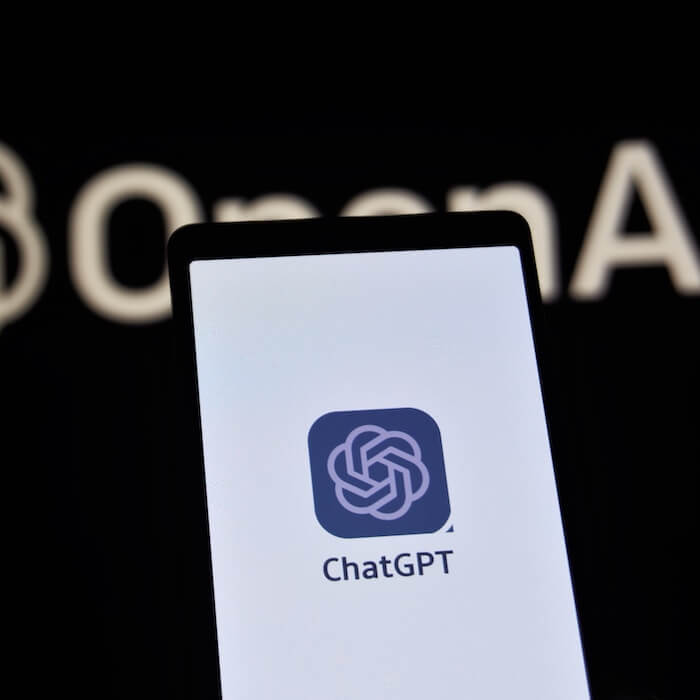
What Is AI in Marketing? CMOs Guide to Risks & Opportunities
Jul 18, 2023|Read time: 11 min.
Key Points
- AI marketing refers to the artificial intelligence-based automation, optimization, and revolutionizing of the traditional marketing industry.
- AI marketing offers substantial benefits for brands and marketers but also poses its share of risks, both known and unknown. Marketers should be ready.
- Despite the powerful future for AI in marketing, putting humans at the center of your strategy remains the best path forward.
What is AI marketing?
‘AI marketing’ is an informal term referring to the ways artificial intelligence (AI) and machine learning are revolutionizing the marketing space.
AI-assisted marketing opens the door for marketers to create better workflows and direct their efforts with much larger amounts of data. It also presents opportunities to make day-to-day tasks and processes more efficient.
The importance of AI in marketing grows as tools and technologies constantly advance, providing new solutions for better, more streamlined, and more targeted marketing.
It also poses challenges and business risks that warrant careful attention and consideration by stakeholders at brands and organizations.
How does it work?
AI marketing works in different ways depending on the application and marketing task.
- Generative AI tools use massive amounts of data as training data, and use it to create new content that can be used across marketing efforts.
- AI automation tools let the user input a variety of data to handle tasks like email targeting and dynamic ads. This takes the pressure off of marketers and can alleviate consumer pain points.
- For marketing personalization, AI collects data to learn customer behaviors, uses algorithms, and provides unique experiences depending on that behavior. The end goal is closer consumer connection.
In pursuit of marketing goals, AI marketing uses processes like:
Machine learning — AI algorithms that allow AI tools to self-learn from data inputs and apply the learnings automatically and without human involvement.
Natural language processing (NLP) — AI that gives computers the ability to understand text, spoken word, and language in a similar way to humans.
Deep learning — AI method that teaches computers to process data in a similar way to the human brain. These models are highly advanced and able to generate insights and predictions, and recognize and grasp complex patterns in different media.
Common uses of AI in marketing
AI marketing covers just about every aspect of marketing. For example, leveraging customer data to build better campaigns, creating full-length marketing content, and even customer experience automation.
Here are the most common use cases in the marketing industry:
Content creation
Generative AI tools are a major piece of AI marketing, and they’re already being used to create thousands of content assets daily. Today’s marketing demands so much content, atomized content, and more to support today’s sophisticated buyer’s journey.
AI tools can receive an input like a question or directive and generate a text or image response based on that query. For marketers and content creators, this can be a monumental time-saver.
And while current generative AI has its limitations, it can generate incredible results after enough human prompting and refinement. Generative AI can create assets like social media posts, articles and blog posts for search engines, images, text, 3D renderings, code, video, music, and much more.
Examples of AI use cases:
- Ask ChatGPT:
- Generate press releases, emails, subject lines, and more based on your specifications, which can be fed to text generators.
- Rely on text generators to write blog posts that can be customized, refined, and optimized by human marketers to save time.
- Take the ad copy you wrote and ask text generators to make it more concise and snappy.
It’s important to note that AI tools can’t and shouldn’t become the entire content generation process. Any AI output will need some level of editing and adjustment.
However, tools like ChatGPT can support the brainstorming and ideation that precedes writing and design. As a result, writers and content strategists can put metaphorical pen to paper more quickly.
Customer interaction
Customer experience, traditionally called customer service, is one of the spaces that is completely changing in the face of AI tools like chatbots and digital assistants.
Everything from customer outreach to on-website customer support, email and text message follow-ups, and surveys are being automated and streamlined by AI.
AI customer interaction is also a window into customer insights. Chat logs can be reviewed to zero-in on the most common or most pressing issues customers are facing and asking about. This can generate insights into product improvement opportunities and other ways to preempt common concerns.
AI-powered personalization
Artificial intelligence is also being leveraged for content personalization purposes. Simply put, AI can customize an individual’s experience based on their behavior.
AI analyzes a variety of customer and target-audience data points to deliver personalized, unique experiences depending on the actions a user takes. Examples include filling out a form, making a purchase, or adding an item to one’s cart.
This is one aspect of AI’s potential for customer journey optimization. For instance, Amazon uses AI to create unique shopping experiences tailored to each user. Brands that can utilize AI to personalize user experiences stand to foster stronger, long-term relationships with consumers.
Marketing automation
Beyond personalization, AI offers several automation options for marketing and customer experience purposes.
- Email automation — AI can help marketers scale and manage large email lists and campaigns. With the ability to deliver specific emails depending on engagement, personalize emails, and analyze email data, AI is a must-have tool.
- Lead nurture — AI tools can serve more tailored lead nurture assets like landing pages to automate and improve parts of the buyer’s journey. The result is tighter lead nurture and more qualified leads overall.
- Customer service — AI-powered customer service bots can help with a major percentage of customer requests and issues, driving positive experiences, customer satisfaction, and trust.
Optimization
AI marketing’s end goal is to create opportunities to optimize all aspects of marketing, from data analysis and automation to content creation, content marketing and more.
AI tools can replace some of the drudgery of day-to-day marketing work and marketers can direct these tools towards better results. Some hypothetical AI-powered marketing strategies include:
- An algorithm that can identify ranking opportunities and automate on-page SEO recommendations
- A strategy built to extract and analyze data about target consumer audiences to better understand them and to better align value.
- A buyer’s journey strategy that leverages AI to understand how different types of leads move from research to purchase decision and deliver personalized assets to different customer types.
- An email marketing newsletter that automatically sends the right emails to the right email list members, based on AI analysis and the human direction from marketers.
Analysis & insights
Across all of AI’s applications, the most common theme is data analysis. Because AI is so adept at dealing with massive datasets and assembling meaning, it’s perhaps the most important innovation for all data-driven marketing tasks. Some examples include:
- Lead score analysis — Based on lead data (behavior, engagement, etc.), AI can analyze and score leads with metrics that measure their potential to transact. This automation helps filter leads and send only the most qualified through the funnel. AI-driven insights may include how to better serve potential customers, what different customer types respond to, and much more.
- Trend and predictive analytics — AI can assess internal and external trends to make predictions that marketers can use to understand customer behavior, market trends, and more. Insights like what new offering to release, when to release it, and how to position it are just a few examples.
- Channel analysis — AI apps and tools can reveal vital real-time channel insights and assist in segmentation, identifying the best performing marketing channels, opportunities for improvement, and how to better align channel-specific efforts.
The Brand Intelligence Report
Exclusive AI insights, search trends, and brand strategies, delivered to your inbox.
Benefits and advantages of using AI in marketing
The upside of artificial intelligence for brands and marketers is sizable and as yet unrealized across the industry. New benefits and advantages continue to develop as the tech gets smarter and smarter. Overall there are a few big benefit areas.
Greater efficiency
AI, across all marketing efforts and tasks, aims to increase efficiency for brands and marketers. AI eases resource needs on creative tasks like writing and design — it takes thankless and grind-heavy tasks and builds automation, and it quickly provides transparent insights about marketing performance.
Taken together, these upgrades lead to more strategic, more efficient operations.
Streamlined workflows
Efficiency is profitable when it’s paired with a unified and streamlined approach. AI tools can help organizations bring together disparate data and tasks to better grasp the holistic picture. In the marketing context, this is a definite win.
For example, AI data tools translate varied e-commerce data points into actionable insights that marketers can then use in white papers, research initiatives, and marketing campaigns.
Data-driven insights at scale
AI’s data-centric nature allows it to take a data input, rapidly understand it, and generate an output based on that data. If accurate data is provided, AI can create insights about that data or create highly accurate reports and other content.
This grounding in data is a tool that even the most data-driven organizations can benefit from. It can also help humans ground their own decision making in data.
Business risks of AI in marketing
Despite the numerous benefits for marketers, AI does have its limitations and risks., Because AI marketing is still fairly new, the shifts and dynamics are not clear yet. Here are some risks to look out for.
Legal exposure
Organizations must be cognizant of the various legal concerns AI use entails. To this point, the concern is the usage rights of materials AI tools produce.
AI output should be edited and reviewed by brand legal teams for compliance. Here are the biggest concerns to consider:
- Data privacy concerns — AI tools always pose data privacy questions, especially those that rely on things like customer data. The other question is whether future legislation will impact AI use of this data.
- Intellectual property concerns — AI tools provide outputs that attempt to avoid duplication, plagiarism, and other infringement. Given the complexities of IP law, it’s unwise to leave it at that. AI outputs that are publicly facing should be assessed by IP professionals to avoid unintended infringement.
- Discrimination concerns — AI tools are trained to avoid bias and discrimination but that doesn’t mean accidental bias cannot appear in AI output. Errors can also occur leading to potentially discriminatory content as well. This can have costly consequences.
- Tort liability — AI tools can also produce inaccurate or negligent results that can impact end users and other stakeholders. Organizations may face substantial liability and costs from tort litigation.
Brand reputation
As we discussed in Generative AI & The Future of Reputational Defense, AI’s adoption poses major risks to brand reputation for companies and public figures.
Brands and public figures face reputational erosion and loss of narrative control as AI takes a leading role in web content creation. Proactive defense is needed, and one way to fortify your brand is to greatly expand reputation-friendly content.
Reliability
How reliable is AI technology when it comes to things like content creation and data analysis? The answer varies. The key thing to keep in mind is that AI, despite the “job-stealing” claims, needs substantial human involvement.
Sure, we could ask ChatGPT to write an article about AI in digital marketing. But is it going to be valuable to our readers, perform well in search, or reflect anything newer than 2021? Absolutely not.
AI output is often only as good as the data it’s fed and how humans direct it. Out of the box, it’s often not reliable and prone to errors. Be aware of this and be mindful of these limitations.
Challenges of deploying AI in marketing
Implementing AI marketing is increasingly valuable for brands, but there are some hurdles and significant costs to consider when opting for the technology. Here are some examples:
Getting executive buy-in
Given some of the risks we discussed above, it can be a challenge for marketing teams to introduce and fully implement AI marketing strategies. Executives rightly see the risk and want to anticipate and mitigate it.
AI represents a wild card for some. For marketers bringing proposals to execs, it’s wise to assess AI options, build a clear case for its use, and understand its limitations.
Technology is constantly evolving
With AI, something new and innovative is always coming around the corner. The explosion of generative AI, going from simple chatbots to full-fledged AI-powered creative suites, is one example.
Your AI marketing strategy should leave room for better algorithms and new technologies to remain as agile as possible.
Also, new tech implies new knowledge requirements. Early adopters and marketers who harness skills like AI prompt writing will find themselves in places to excel when it inevitably becomes widely integrated.
Building a team
AI thankfully didn’t turn out like the Terminator franchise prophesied and requires human intelligence and input to do its best, most relevant work.
Implementing and using AI requires a baseline of user experience and knowledge and for larger organizations, likely requires teamwork.
Staffing and collaboration should be considered because hiring, training, and developing AI management teams is resource-heavy. Smaller teams can rely on a few AI enthusiasts within the group, but at scale, AI integration will require a group effort.
Ensuring proper risk management
As discussed, AI opens up a wealth of upsides, but also a Pandora’s box of known and unknown risks. Today’s AI marketing tools are new and subject to unknown vulnerabilities that may pop up in the future.
The legal liability perspective alone demonstrates the potential cost, which can cause pricing out for smaller brands. Organizations and marketing leaders have to find ways to capture the upside while limiting risk.
Future of AI in marketing
Digital marketing, as an industry and discipline, is undergoing a fundamental shift as AI technologies, tools, apps, platforms and algorithms evolve and improve.
Previously difficult and complicated marketing efforts are becoming automated and transparent. Marketers’ mental energies are increasingly freed up to pursue high-quality consumer connections, instead of tedious data input and analysis.
Like all innovative technologies, AI comes with risks and costs that must be part of a brand’s calculus when assessing and implementing it. But brands that pursue digital marketing strategies that put humans first and leverage AI tools to build even stronger connections are choosing the right path.
Owned asset optimization is the human-centric, holistic marketing strategy perfectly aligned with AI that not only dovetails with AI tech, but also provides brand protection from the downsides of AI’s ascendance. Building a constellation of owned assets is the key to connection in the AI marketing future.
FAQs
AI marketing is a catchall term for the ways that AI’s growing adoption is changing the marketing industry and revolutionizing the practice of marketing. AI marketing includes all the different tools at the modern marketer’s disposal when creating an AI-assisted marketing strategy.
AI in marketing examples include dynamic search ads, using ChatGPT to create blog posts, creating logos with generative AI tools, using AI automation for newsletter targeting, analyzing consumer data with AI, and much more.




